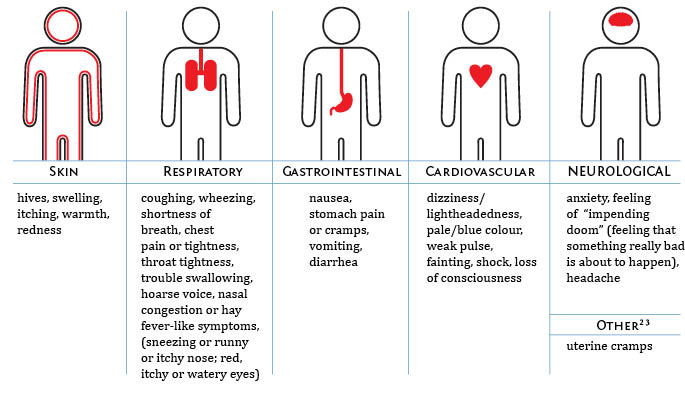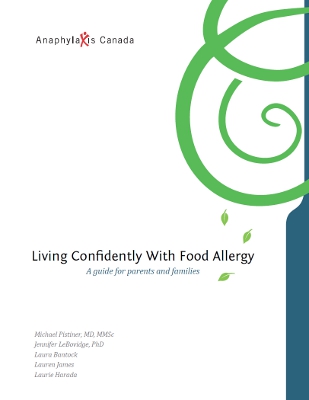Learn how to recognize the signs and symptoms of an allergic reaction so that you can give life-saving treatment early. Most allergic reactions happen within minutes to a few hours after contact with an allergen. Reactions can differ each time. Keep in mind that an allergic reaction can start with mild symptoms that can get worse quickly.2 3
Don’t depend on seeing hives! Some anaphylactic reactions occur without any skin symptoms (e.g. hives or swelling).14
An allergic reaction can involve any of the following symptoms, which may appear alone or in any combination.2 3 4 Make sure to talk to your child’s doctor about how to recognize anaphylaxis.

Small children can have a hard time describing their symptoms. They may complain of a “funny feeling” in their mouth or throat. Be aware of words that children may use to describe an allergic reaction. They may say, “my mouth feels funny” or “my tongue is itchy”.
NIH Resource: Guidelines for the Diagnosis and Management of Food Allergy in the United States: Summary For Patients, Family, and Caregivers
AAFA Resource: Quick Allergy Card – Is this Anaphylaxis?
2. National Institute of Allergy and Infectious Disease (NIAID)-Sponsored Expert Panel. “Guidelines for the Diagnosis and Management of Food Allergy in the United States: Report of the NIAID-Sponsored Expert Panel.” The Journal of Allergy and Clinical Immunology 126.6 (2010): S1-S58.
3. Sampson, H.A. et. al. “Second symposium on the definition and management of anaphylaxis: Summary report—Second National Institute of Allergy and Infectious Disease/Food Allergy and Anaphylaxis Network symposium.” The Journal of Allergy and Clinical Immunology 117.2 (2006): 391-397.
4. Canadian Society of Allergy and Clinical Immunology. Anaphylaxis in School & Other Settings. 2
nd Ed. Revised. 2011.
14. Sampson, H.A., Mendelson, L. and Rosen, J.P. “Fatal and near-fatal anaphylactic reactions to food in children and adolescents.” New England Journal of Medicine 327 (1992): 380-384.
